MKT600: Presentation on Ethical Marketing and Social Responsibility
VerifiedAdded on 2022/09/14
|8
|805
|14
Presentation
AI Summary
This presentation delves into the critical aspects of ethical marketing, emphasizing the importance of social and environmental responsibility in modern business practices. It explores various approaches to ethical issues, highlighting the significance of fairness, honesty, and consumer-oriented direct marketing. The presentation discusses the adoption of ethical codes and the necessity of integrating moral standards into marketing strategies. It examines unethical practices such as parasitic marketing, unfair advertising, and false advertising, providing examples and emphasizing their negative impacts. Furthermore, the presentation addresses environmentally responsible marketing, advocating for sustainable practices and the creation of social value. It also touches upon the disconnect between profitability and environmental/social responsibility. Key concepts like legality, decency, honesty, correctness, and reliability in advertising are emphasized, alongside references to relevant literature.
1 out of 8

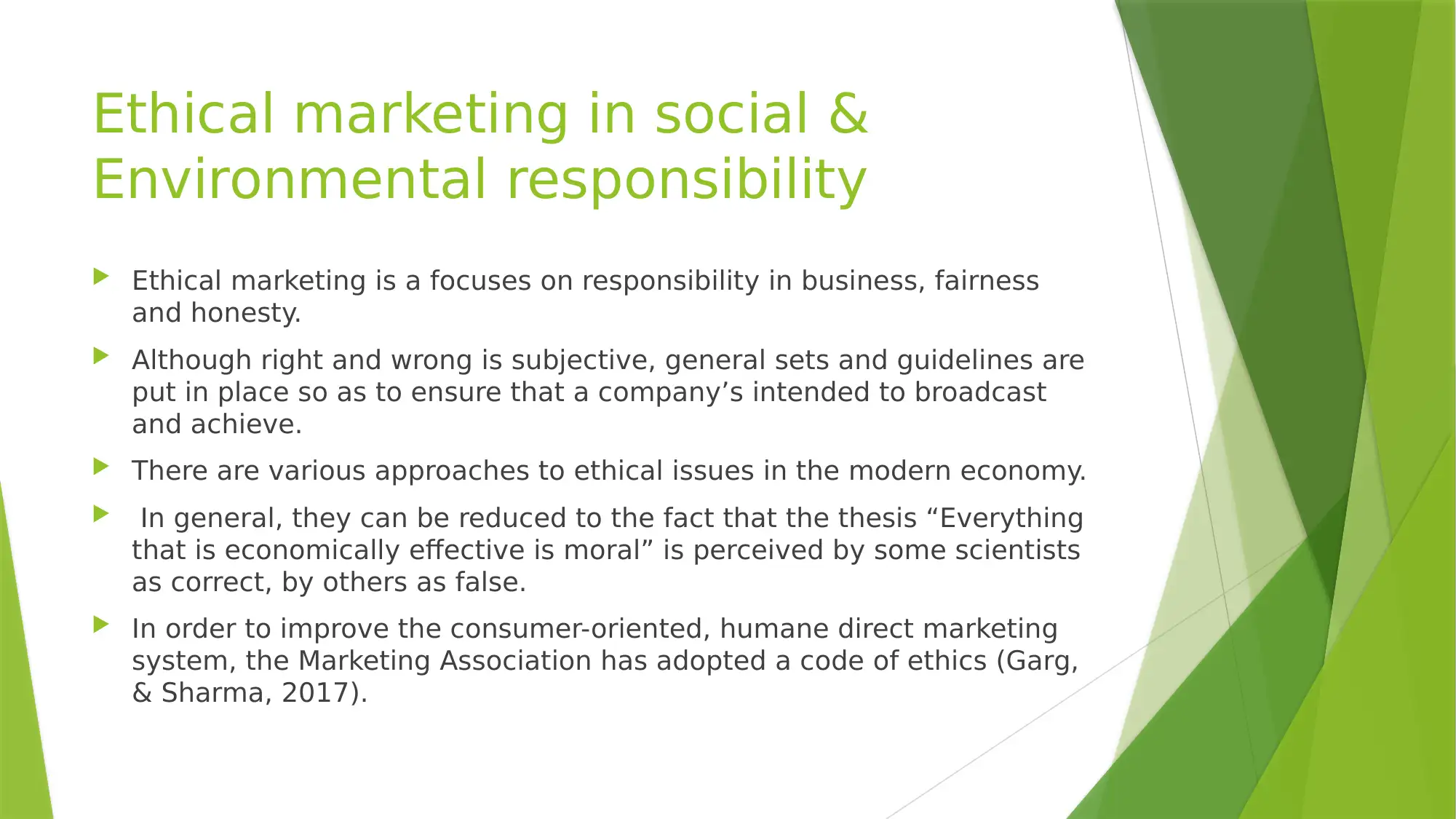
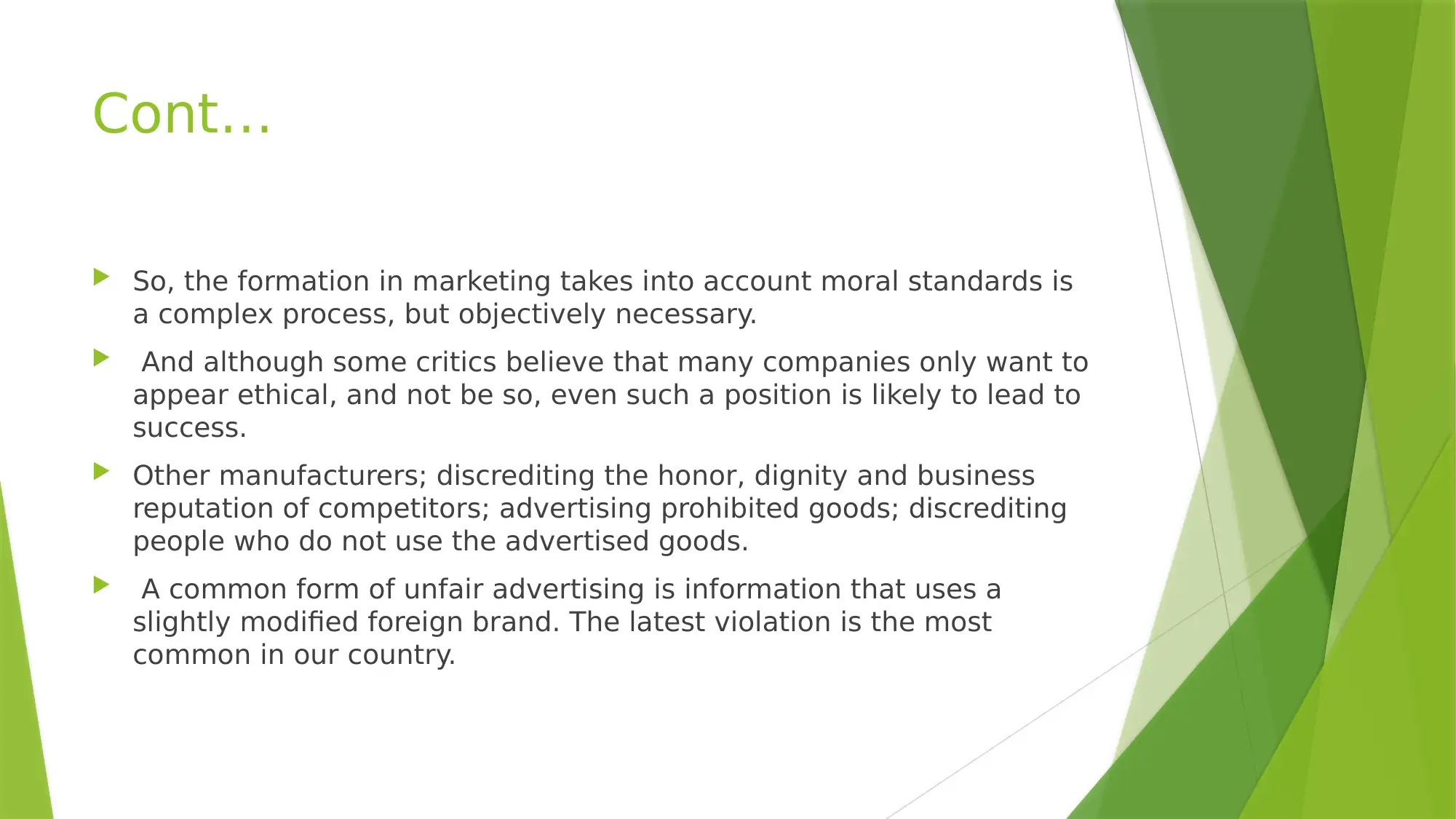

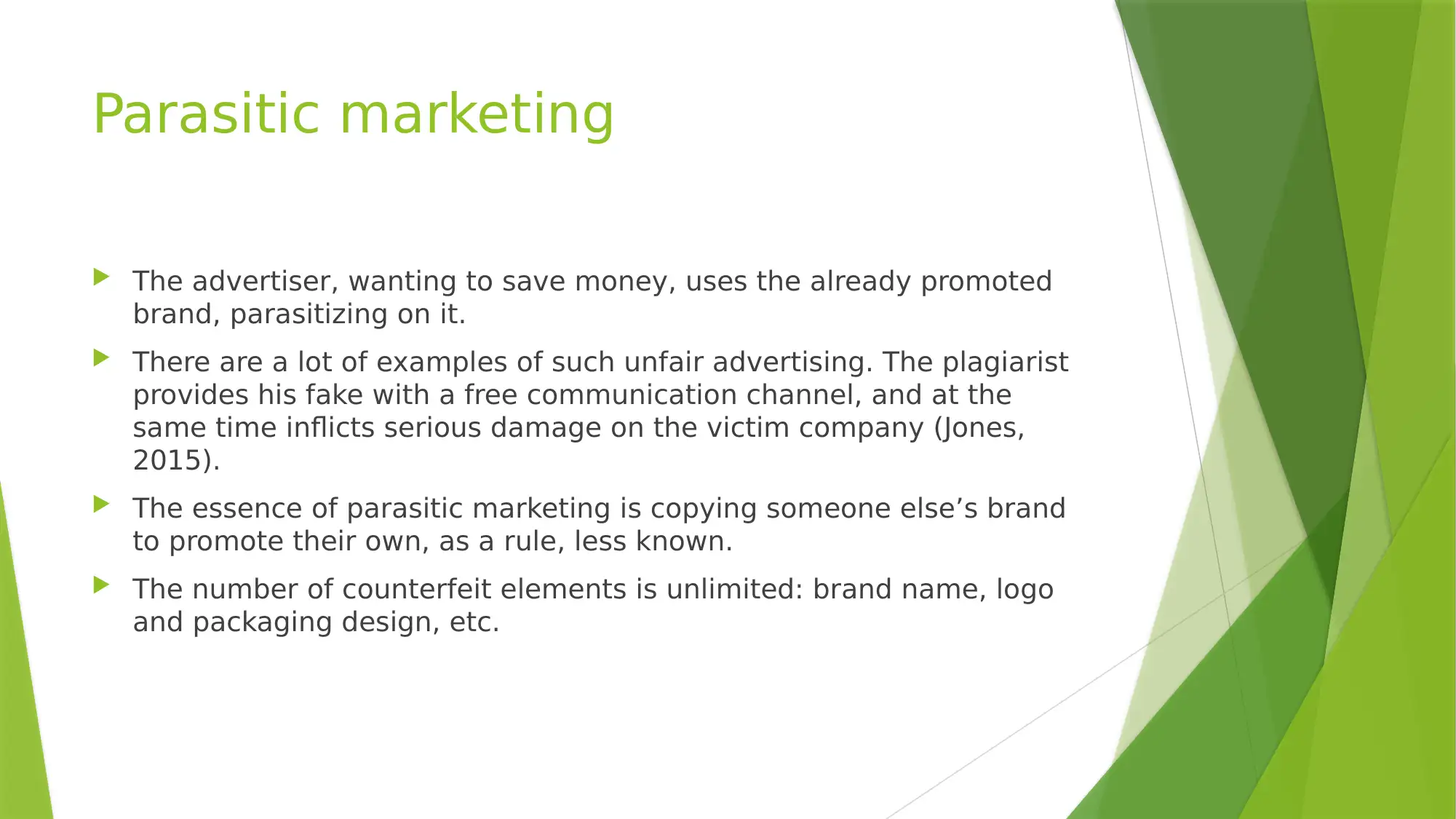
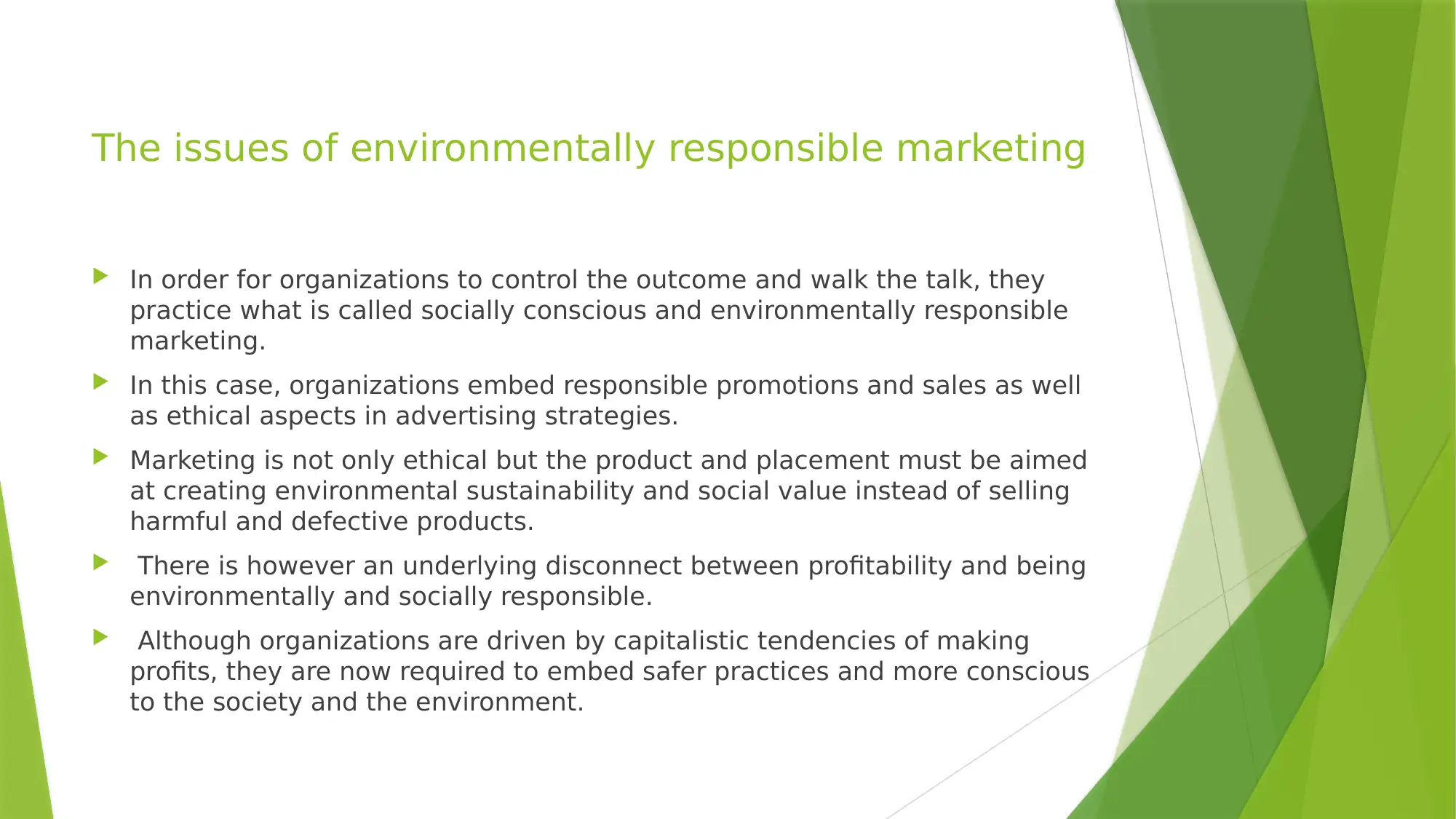
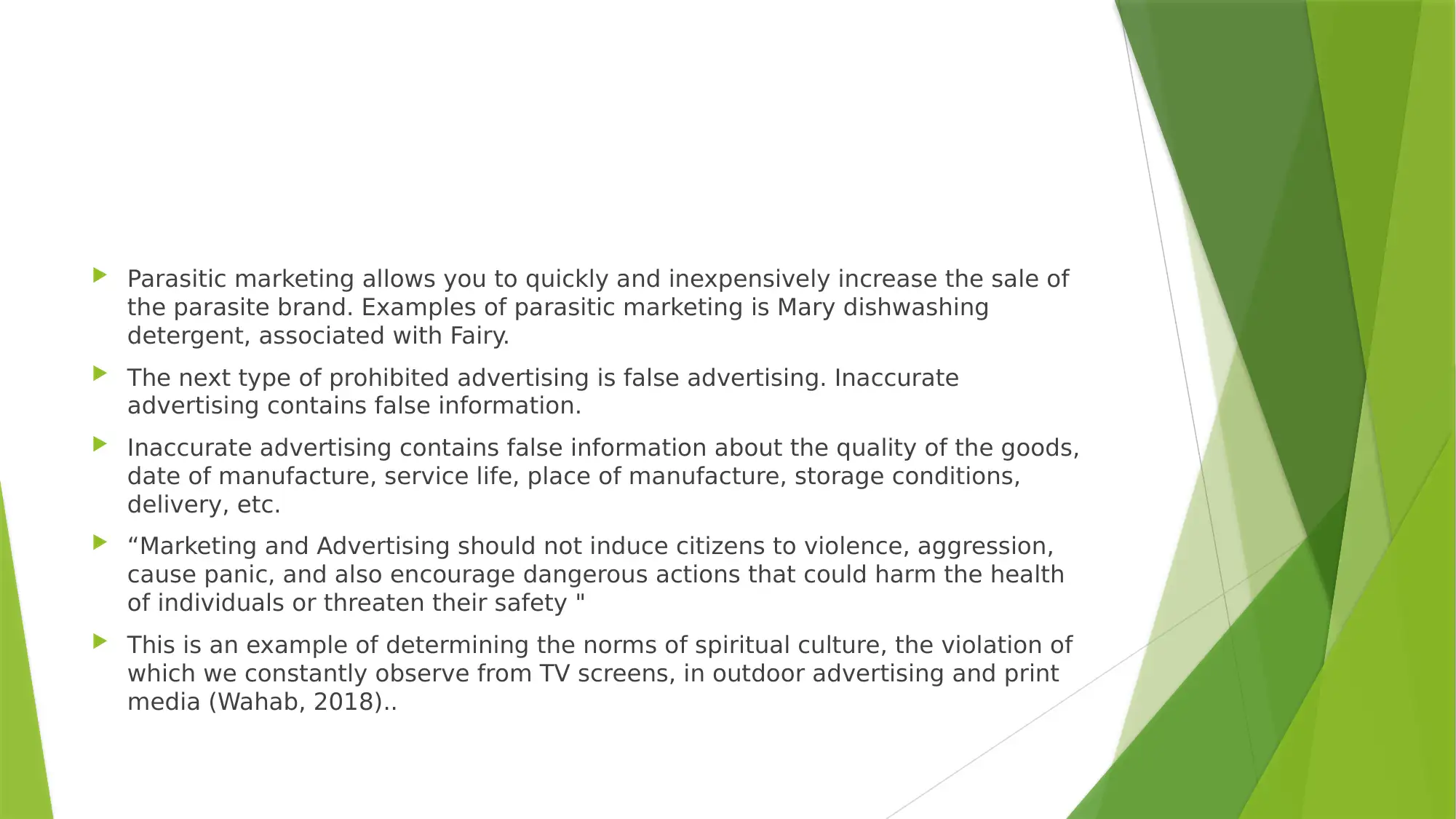
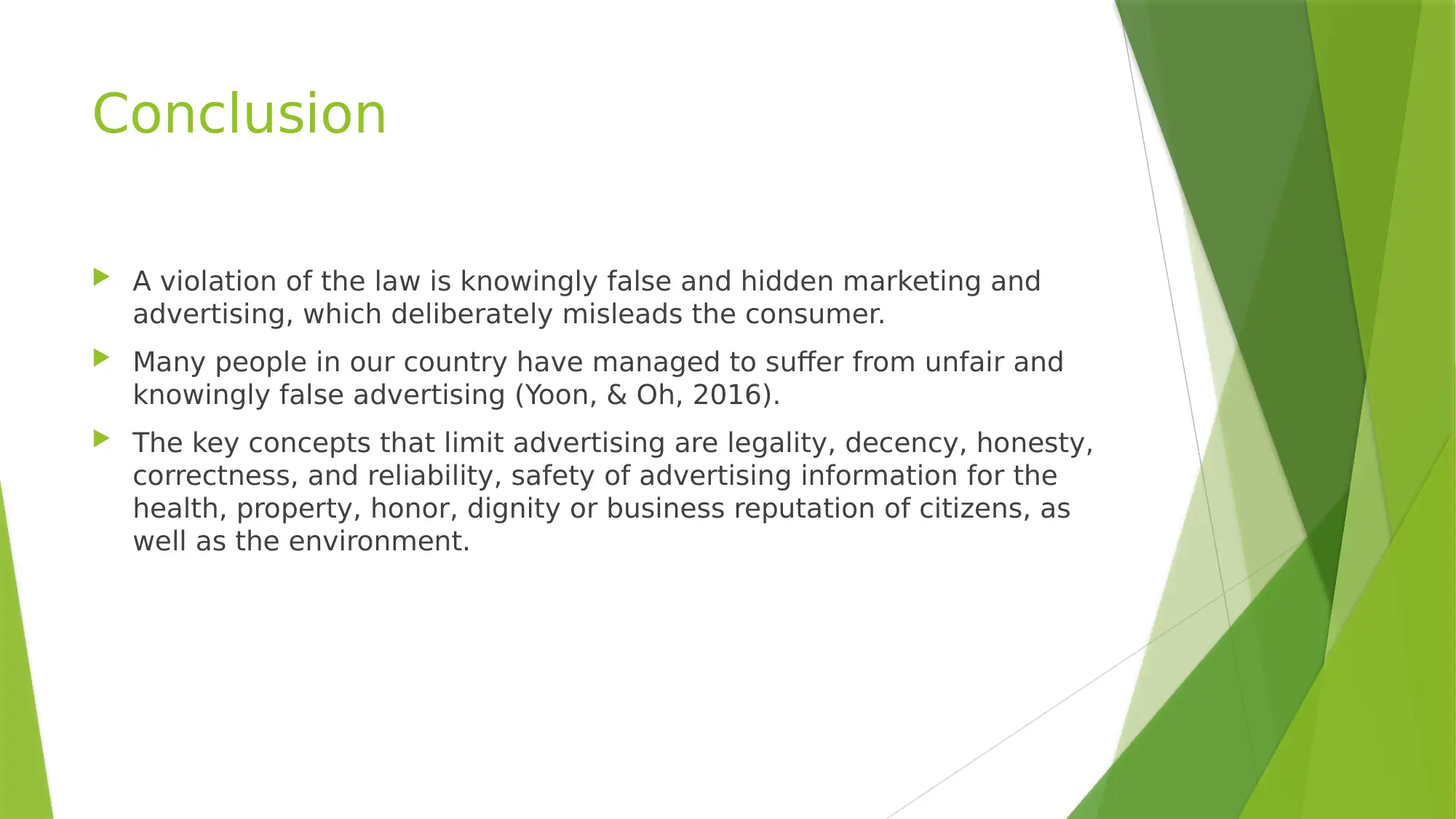
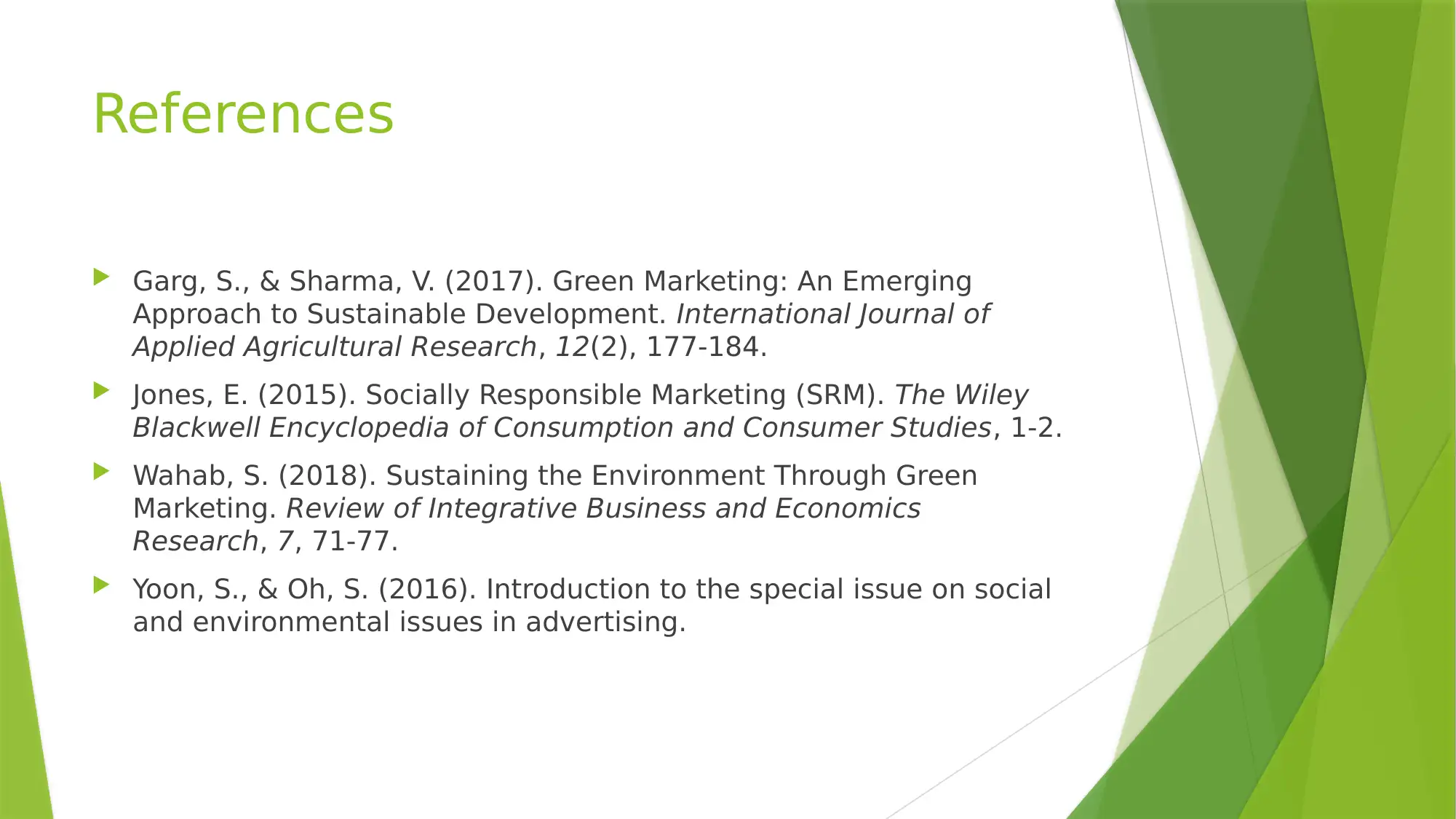



![[object Object]](/_next/static/media/star-bottom.7253800d.svg)